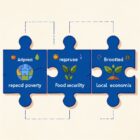What Role Do SNAP Benefits Play in Economic Stability?

Imagine a world where economic stability is within reach for all individuals and families. In this landscape, SNAP benefits play a pivotal role. They serve as a lifeline, providing crucial support to those facing financial hardships. By boosting household income, stimulating local economies, and promoting workforce participation, SNAP benefits create a ripple effect of positive change.
Moreover, they mitigate the impact of economic downturns, ensuring that no one is left behind. Join us as we delve into the vital role SNAP benefits play in fostering economic stability.
Key Takeaways
- SNAP benefits increase household income and lift millions of people out of poverty, including children.
- SNAP benefits stimulate local economies by generating economic activity and supporting small businesses.
- SNAP benefits reduce healthcare costs by providing access to nutritious food and improving public health outcomes.
- SNAP benefits support workforce participation and productivity by enabling individuals to maintain physical health, pursue education, and develop skills.
Alleviating Poverty Through Increased Household Income
SNAP benefits can help alleviate poverty by increasing your household income. The Supplemental Nutrition Assistance Program, commonly known as SNAP, provides eligible individuals and families with financial assistance to purchase groceries. By receiving these benefits, you can free up a portion of your income that would have been spent on food, allowing you to allocate those funds towards other essential expenses, such as housing, utilities, or healthcare.
According to data from the United States Department of Agriculture (USDA), SNAP benefits have a significant impact on reducing poverty rates. In 2019 alone, SNAP lifted approximately 3.7 million people, including 1.5 million children, out of poverty. This represents a substantial reduction in the overall poverty rate, demonstrating the effectiveness of SNAP in improving economic stability.
Moreover, research consistently shows that SNAP benefits have a multiplier effect on local economies. For every dollar spent on SNAP benefits, it generates approximately $1.50 to $1.80 in economic activity. This additional income stimulates local businesses, creates jobs, and boosts overall economic growth. Therefore, by increasing your household income through SNAP benefits, you not only improve your own financial situation but also contribute to the broader economic stability of your community.
Stimulating Local Economies and Businesses
By participating in the Supplemental Nutrition Assistance Program (SNAP), you can actively contribute to stimulating local economies and supporting small businesses.
SNAP benefits have a significant impact on local economies by injecting funds directly into communities. According to a study conducted by the United States Department of Agriculture (USDA), every dollar of SNAP benefits spent generates $1.50 to $1.80 in economic activity.
This multiplier effect occurs because when SNAP recipients have additional funds to purchase food, they’re more likely to spend it locally, supporting grocery stores, farmers markets, and other food retailers.
Additionally, small businesses benefit from SNAP participation as it increases their customer base. Research from the Economic Research Service (ERS) shows that SNAP participants are more likely to shop at small businesses compared to non-participants.
This increased patronage helps small businesses thrive and creates job opportunities within the local economy.
Reducing Healthcare Costs and Improving Public Health
When you participate in SNAP benefits, you not only stimulate local economies and support small businesses, but you also contribute to reducing healthcare costs and improving public health.
Here are four ways in which SNAP benefits play a role in reducing healthcare costs and improving public health:
- Increased access to nutritious food: SNAP provides low-income individuals and families with the means to purchase healthy food options. Access to nutritious food helps prevent diet-related diseases such as obesity, diabetes, and heart disease, ultimately lowering healthcare costs.
- Improved child health outcomes: Children who receive SNAP benefits have better health outcomes compared to those who do not. They’re more likely to have regular check-ups, receive necessary vaccinations, and have access to proper nutrition, leading to reduced healthcare expenses in the long run.
- Prevention of chronic diseases: By ensuring access to healthy food, SNAP benefits help prevent and manage chronic diseases. A well-balanced diet can reduce the risk of developing conditions like hypertension and certain types of cancer, reducing healthcare costs associated with treatment and management.
- Enhanced mental health: SNAP benefits not only contribute to physical health but also support mental well-being. Access to nutritious food can improve mood and cognitive function, reducing the burden on mental healthcare services.
Supporting Workforce Participation and Productivity
To support workforce participation and productivity, SNAP benefits play a crucial role in providing individuals with the resources needed for economic stability. Access to nutritious food through SNAP helps ensure that individuals are physically well and able to engage in the workforce. Research has shown that food insecurity can lead to poor health outcomes, increased absenteeism, and reduced productivity in the workplace. By addressing this issue, SNAP helps individuals maintain their physical health, which in turn supports their ability to work and contribute to the economy.
Furthermore, SNAP benefits also enable individuals to invest in their skill development and education, leading to improved workforce participation and productivity. The program helps alleviate financial burdens by providing assistance for basic food needs, freeing up financial resources that can be used for education and training. Studies have demonstrated a positive relationship between education levels and workforce productivity, with higher education leading to higher wages and job stability.
In addition, by supporting workforce participation and productivity, SNAP benefits have a positive impact on overall economic growth. When individuals have access to the resources they need, they can actively participate in the labor market, contribute to the economy, and increase their earning potential. This not only benefits individuals and their families but also strengthens local communities and the nation as a whole.
Transitioning into the subsequent section about mitigating the impact of economic downturns and recessions, it’s important to note that SNAP benefits serve as a vital safety net during times of economic hardship.
Mitigating the Impact of Economic Downturns and Recessions
SNAP benefits serve as a crucial safety net during economic downturns and recessions, providing individuals with essential resources to mitigate the impact of financial hardship. Here are four ways in which SNAP benefits help mitigate the effects of economic downturns:
- Food security: SNAP benefits ensure that individuals and families have access to nutritious food, even when their financial situation is strained. This helps prevent hunger and malnutrition during difficult economic times.
- Stabilizing household budgets: SNAP benefits provide additional funds for purchasing groceries, which can alleviate the strain on household budgets. This allows individuals to allocate their limited income towards other essential expenses, such as rent or utilities.
- Boosting local economies: SNAP benefits inject money directly into the economy, as individuals spend their benefits at local grocery stores and markets. This helps support local businesses and stimulate economic activity, particularly during recessions when consumer spending may decline.
- Reducing long-term negative consequences: By providing essential resources during economic downturns, SNAP benefits help prevent individuals from resorting to extreme measures, such as skipping meals or sacrificing healthcare. This can have long-term positive effects on individual health, well-being, and overall economic stability.
Frequently Asked Questions
How Can SNAP Benefits Help Improve Public Health?
Snap benefits can help improve public health by providing low-income individuals and families with access to nutritious food. This can lead to better overall health outcomes, reduced risk of chronic diseases, and improved quality of life.
What Are Some Ways That SNAP Benefits Support Workforce Participation?
SNAP benefits support workforce participation by providing nutritional assistance to low-income individuals. By ensuring access to food, SNAP helps alleviate hunger and malnutrition, allowing individuals to maintain their health and focus on employment opportunities.
How Do SNAP Benefits Stimulate Local Economies and Businesses?
SNAP benefits boost local economies and businesses by providing a steady stream of customers with purchasing power. This influx of funds increases demand, which in turn helps stimulate economic activity and supports businesses in the community.
What Impact Do SNAP Benefits Have on Reducing Healthcare Costs?
SNAP benefits reduce healthcare costs by ensuring food security for low-income individuals. When people have access to nutritious food, they are less likely to develop chronic health conditions, leading to decreased healthcare expenses.
How Do SNAP Benefits Mitigate the Effects of Economic Downturns and Recessions?
During economic downturns and recessions, SNAP benefits provide a vital safety net for individuals and families. Access to nutritious food stabilizes their well-being, allowing them to focus on other aspects of their lives and recover from financial setbacks.



